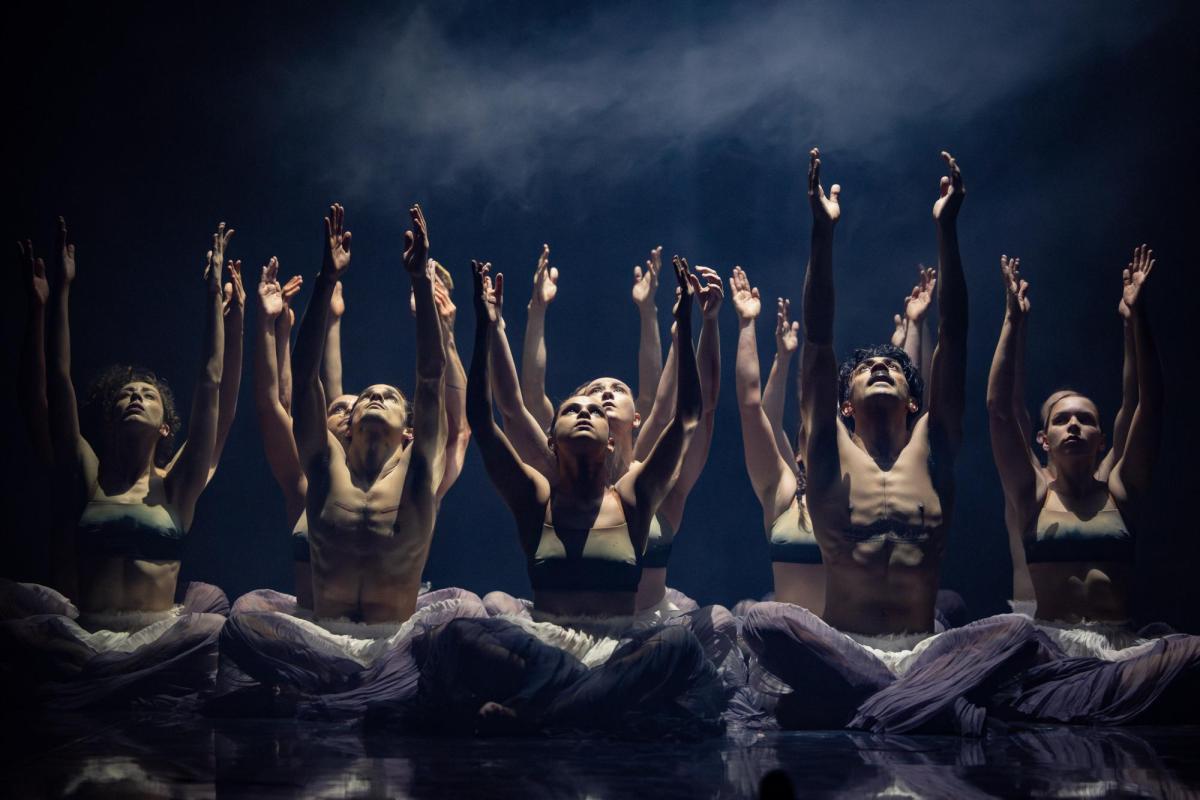A new production by the Bangarra Dance Theatre is always a big event in the Australian arts scene – and it’s not hard to see why. Horizon, now playing at the Sydney Opera House, is a rich, layered production that stays with the viewer long after curtain call.
Bangarra’s first mainstage cross-cultural collaboration, Horizon draws inspiration from First Nations myths, legends and history, not just in Australia but across the southern seas in Aotearoa.
The work is split into two acts, the first being Kulka, choreographed by Sani Townson, who has Zenadth Kes (Torres Strait Islander) ancestry. The second act is called The Light Inside, choreographed by Deborah Brown (who also has a Zenadth Kes background) and Moss Te Ururangi Patterson, the Māori choreographer who grew up around Lake Taupō on New Zealand’s North Island.
Kulka is rooted in traditional Zenadth Kes stories. Despite this ancient provenance and the dancers drawing inspiration from the region’s wildlife – including crocodiles, cassowaries and snakes – this section of Horizon feels quite contemporary.
Stylistically, it’s reminiscent of 360°, Rafael Bonachela’s landmark first commission for the Sydney Dance Company in 2008; musically, it almost feels like we could be in the Berghain, the Berlin nightclub that has been called “the world capital of techno”. The dancing in this section is urgent, angular and sharp.
The set in Kulka includes a gigantic mirror spanning the back wall of the stage, angled towards the floor. The dance performances and video designer David Bergman’s projections are doubled up by the mirror, presenting a kaleidoscope of movement set to a frenetic beat.
The effect is stunning but short-lived, with Kulka ending and the show breaking for intermission after just 20 minutes.
We return in Act Two to something that feels quite different. The Light Inside encompasses both Zenadth Kes and Aotearoa cultures. This act is very much concerned with water and is divided into two subsections with aqueous names: Salt Water (choreographed by Brown) and Fresh Water (Patterson). Fittingly, the dancing in this much longer act is more fluid than in Act One and perhaps more beautiful and ethereal.
As in Kulka, the set design is darkly beautiful. Elizabeth Gadsby’s set design recalls the mountainous, volcanic horizon of the Land of the Long White Cloud. The lighting and projections evoke water, the stars, the cosmos. The overall effect is hypnotic and affecting, although somewhat amorphous.
If there’s a criticism to be made about Horizon it may be that the narrative is too nebulous. Under former artistic director Stephen Page, Bangarra productions generally had a strong, clearly identifiable story. Under Frances Rings, who took over as artistic director in 2022, this doesn’t seem to the case – at least, not to date.
Read: Exhibition review: Alphonse Mucha: Spirit of Art Nouveau, Art Gallery of New South Wales
Whether this is a positive or a negative depends on one’s artistic sensibilities – but in a world where so much is prosaic (even in the theatrical domain) the poetic can be a very refreshing tonic.
Horizon
Bangarra Dance Theatre
Artistic Director: Frances Rings
Choreographers: Deborah Brown, Moss Te Ururangi Patterson, Sani Townson with Bangarra Dance Theatre Dancers
Composers: Brendon Boney, Amy Flannery, Steve Francis
Set Designer: Elizabeth Gadsby
Associate Set Designer: Shana O’Brien
Costume Designers: Jennifer Irwin, Clair Parker
Lighting Designer: Karen Norris
AV Designer: David Bergman
Associate AV Designer: Cameron Smith
Kalaw Kawaw Ya Language Consultant: Leonora Adidi
Bangarra Dancers: Lillian Banks, Bradley Smith, Courtney Radford, Kallum Goolagong, Kassidy Waters, Jye Uren, Kiarn Doyle, Maddison Paluch, Daniel Mateo, Emily Flannery, Janaya Lamb, Chantelle Lee Lockhart, James Boyd, Amberlilly Gordon, Lucy May, Donta Whitham
Tickets: $49-$119
Horizon will be performed until 13 July 2024 at the Drama Theatre, Sydney Opera House, Sydney before moving on to Canberra, Brisbane and Melbourne.





